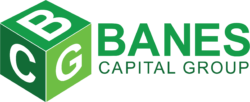Mission Impossible
Good morning Mr. Powell. Your mission, should you decide to accept it, is to drive down inflation using only the tools at your disposal – namely QT, QE, and otherwise implementing monetary policy with rate cuts and hikes. You’ll have your usual team but no textbook solution to accomplish your mission. Back on the 15th, the FOMC went big with a 75–bps rate hike that was the largest since 1994. A few obvious conclusions could be drawn from the move. It’s clear that Fed Chair Jerome Powell was in a corner and had to show the markets he was serious about fighting inflation. He said he had an unconditional commitment to cool prices. Thus, with their ‘shock and awe’ hike of 75 bps, the Fed was trying to regain credibility but in doing so threw forward guidance out the window. We thought the Fed would seek a 75–bps solution in June because of the pressures coming from losing the fight on runaway prices.
Quick Links
The same Fed that got behind the curve on inflation is seeking to show they’re ahead of the curve on achieving a soft landing – while foregoing a recession. The Bond Market Review doesn’t want a deeper recession (that we may already be entering) but doesn’t buy the line that the Fed can hike aggressively with the economy teetering near zero growth. The incoming data now would normally call for stimulus. The FOMC had opened with this observation: “Overall economic activity appears to have picked up after edging down in the first quarter.” Perry Mason would have quickly risen to challenge: “Objection! Assumes facts not in evidence.” They took the White House line on Russia’s continued invasion into Ukraine causing further hardships. They said: “The invasion and related events are creating additional upward pressure on inflation and are weighing on global economic activity.” In taking the ‘Russia’ line, the Fed can sidestep their failing to see inflation was taking hold well over a year before the invasion.
We still contend there’s little evidence that high oil prices can be driven down by raising rates. In the last BMR we said: “If the FOMC intends to beat inflation by raising the misery level – recession will surely follow and may be at hand.” Who knows what the effects will be of the hikes already in place? It’s clear to us that attempting to slow a stagnant–growth economy will only achieve recession earlier – and make it worse. The U.S. economy contracted by 1.60% in Q1 and according to the Atlanta Fed’s GDP–Now forecast, it also dropped by 1% in Q2. If true, the economy entered a recession in Q1. It’s interesting that the lone dissenter, Kansas City FRB President Esther George, was referred to as ‘dovish’ for preferring a 50–bps hike! Despite the large hike with more to come, San Francisco’s Mary Daly said the Fed was merely “tapping the brakes.” She and other Fed members collectively said they did not expect a recession. Meanwhile, U.S. assets fell hard in the first half and over 8 million Americans can’t pay their rent.
Cleveland’s Loretta Mester said it could take a couple of years to return to 2% inflation. She and other members are expecting to raise rates by another 50 to 75 bps with their July 27th policy statement. We don’t need a return to 2%! The trouble with math is that it assumes a beginning coordinate from which to project a sloped forecast. If we are merely seeking a return to 2%, then gas prices could remain at $5/gallon and then moderately rise thereafter. We need a large drop in prices before returning to smaller inflation numbers. That will only happen with increased oil production. Lower fuel prices would help reduce prices at households and many levels across supply chains.
Looking Ahead
- Equity cycles have a high due near July 13th and a low due near July 22nd.
- The bond yield cycles show a possible low due near July 8th and a high due near July 27th
- U.S. markets will be closed for Independence Day on Monday, July 4th. Bonds will close early on the 1st.
Half Time and Trailing Badly
Though already providing slowing measures, Powell said: “We hope that growth will remain positive.” He said the “U.S. economy is actually in pretty strong shape.” They also told us the economy was in a “good place” in late 2019. Amazing how quickly things can change. He said the aim of tightening is “is to slow growth down so that supply will have a chance to catch up.” That’s a dangerous strategy! It reminds us of a coach that’s down at half time but is trying to hold a upbeat interview. But it’s not positive – a measure of U.S. consumer confidence just hit a record low.
So, where are we really? If not already in recession, we’re teetering on one – with the Fed determined to provide more slowing measures. Speaking to the combined condition of the markets, this is one of the worst starting halves on record. The S&P had its worst beginning since 1970. Already down to begin the year, Bitcoin lost over 57% in H1 (first half) 2022. The Nasdaq plunged 29.51%, the S&P dropped 20.58%, and the Dow Industrials fell 15.31%. Banks had risen 12.66% but ended the half 23.60% lower. Overall stocks had their worst start in 60 years – with bonds and crypto suffering the kickoff in history. Silver tumbled to the lowest levels since July 2020 and Gold gave up a 13.68% gain to stand 1.16% lower. Crude Oil and the Dollar saw large gains.
Treasuries, Agencies, and MBS
Rates began to turn lower with our June 16th cycle – but had risen to multi–year highs into that date. Yields continued their dissent last week in dropping by 12, 15.5, 9.5, and 2 bps for the 2, 5, 10, and 30–year Treasury sectors. Through today, and to finish out June, yields for those sectors declined another 11, 14.5, 12, and 7.5 bps. Into June 16th, Freddie Mac 30–year rates surged the most since 1987 in a jump from 5.23% to 5.78%. After rising 3 bps more to 5.81% last week, they dropped to 5.70% for the first decline in 4 weeks. 15–year product rose from 4.38% to 4.92% and then checked back to 4.83%. While only a net $1.3 billion flowed into U.S. assets from foreign entities in April, a substantial $87.7 billion was allocated to longer–term U.S. debt.
Recent Treasury auctions have not gone well as demand wavered and yields rose. On Monday (06/27) the Treasury offered 2 and 5–year notes. $46 billion 2–year notes brought 3.084% for the highest yield since December 2007. Demand fell versus May and the buying group that includes foreign central banks accounted for 51.5% of the supply versus 62.6% in May. $47 billion 5–year notes brought 3.271% which was the highest yield since July 2008. Demand was very weak and foreign buying fell from 62.9% in May to 56.5% of the June supply. On Tuesday (06/28), $40 billion 7–year notes came at 3.28% – the highest yield since March 2010. Demand was decent but fell hard versus the May offering. Foreign allocations also tumbled – dropping from May’s 77.9% to 61.9%. On June 22nd, the Treasury sold $14 billion 20–year notes at 3.488%. That was the highest yield since 20–year auctions resumed. Demand rose versus May though foreign buying fell from 70.6% to 67.4%.
Economics
Not only is the Atlanta Fed’s forecast for Q2 now negative, Q1 GDP was revised downward from –1.50% to –1.60%. Personal Consumption was revised sharply lower from 3.10% to 1.80%. The GDP Price Index was revised .10% higher to 8.20% – the highest reading since June 1981. Core PCE rose from 5.10% to 5.20%. These indicators are looking very poor – and the International Monetary Fund just cut U.S. growth forecasts but said a recession would be “narrowly avoided.” Personal Income rose by .50% in May, but Spending cooled with a .20% rise. Real Personal Spending (adjusted for price changes) dropped .40%. Retail Sales dropped for the first time in 5 months. May sales fell .30% but were up .50% ex autos. April’s data was also revised lower by .20%.
The Fed’s favorite inflation gauge rose .60% in May, but that PCE Deflator held steady at 6.30% on an annual basis. Ex food & energy, the core rose .30% – leading annual core Personal Consumption Expenditures to soften from 4.90% to 4.70%. Import Prices rose by .60% which also lessened that annual pace of gain from 12.50% to 11.70%. Export Prices rose by 2.80% – advancing the annual pace from 18.30% to 18.90%.
For the past 3 weeks, Initial Jobless Claims have been hovering just over 230K – steadying near the highest levels since March. Continuing Claims hit pandemic lows 3 weeks ago but have risen from 1.309 million to 1.328 million since. Conference Board Consumer Confidence fell from 103.2 to 98.7. The Present Situation slipped from 147.4 to 147.1 and Expectations fell from 73.7 to 66.4 (the lowest level in nearly 10 years). University of Michigan tumbled from 58.4 to a record low of 50. Current Conditions fell from 63.3 to 53.8 and Expectations dropped from 55.2 to 47.5. Business Optimism also fell to a new low. The Merchandise Trade deficit (Advance Goods Trade Balance) declined from $106.7 billion to $104.3 billion (the least his year).
Industrial Production rose by .20% in May, but Manufacturing Output fell by .10% for the first decline in 4 months. Capacity Utilization dropped from 80.90% to 79.00%. The Leading Index fell by .40%. The Chicago Fed National Activity Index rose by only .01. MNI Chicago PMI (purchasing managers) fell from 60.3 to 56. While Empire (New York) Manufacturing was less negative with a rise from –11.6 to –1.2, the Philadelphia Fed Business Outlook fell from +2.6 to –3.3. Other regions also weakened as Richmond Fed Manufacturing fell from –9 to –11, Kansas City dropped from +23 to +12, and Dallas retreated from –7.3 to –17.7 (the lowest since May 2020).
Homebuilder optimism fell to a 2–year low on dropping demand. That NAHB Housing Market Index fell from 69 to 67. Buying traffic was the least since June 2020. May Housing Starts tumbled 14.42% to 1.549 million annual units. Building Permits were 7.02% lower to 1.695 million annual units. Sales of Existing Homes fell 3.39% to 5.41 million annual units – the slowest pace in nearly 2 years. Higher rates are the primary reason for the drop. However, New Home Sales rose by 10.65% to 696K annual units. That marked the first improvement this year. Average sales prices fell from $569.5K to $511.4K. Pending Home Sales rose by .70% and were up 12% versus May 2021. The FHFA House Price Index rose by 1.60% in April. The annual increase softened from 20.64% to a still–high 20.39%. Metro Home Prices rose by 1.77% in April. That S&P Case–Shiller 20–City Index accelerated from 21.15% to 21.23% annually.
Friday kicks off July trading with May Construction Spending and June data for ISM Manufacturing and Vehicle Sales. The Treasury market will close early (2 p.m. ET) for the July 4th weekend and Monday is a U.S. market holiday for Independence Day. Next Tuesday (07/05) is set for May Factory Orders and orders for Durable and Capital Goods. Wednesday follows with MBA Mortgage Applications (which rose by 4.20% and then .70% over the past 2 weeks), the ISM Services Index, JOLTS Job Openings, and the minutes from the June FOMC meeting. Thursday is set for Challenger Job Cuts, ADP Employment Change (June private payrolls), the May Trade Balance deficit, and jobless claims data. Next Friday is set for the June payroll numbers along with the U.S. Unemployment Rate. May Consumer Credit is also due that Friday.
Equities
We still have unfilled downside targets of S&P 3,577 and then possibly 3,261 later in the year (maybe October). The Dow Industrials had back–to–back losses near 1,500 points before gaining 1,611.90 points or 5.39% last week to 31,500.68. However, the last 4 days of June saw a drop of 2.30% with the month losing 6.71%. The Nasdaq rose 7.49% last week but lost 4.99% into month end for an 8.71% June loss. The S&P gained 6.45% last week and then dropped 3.23% through Thursday for an 8.39% monthly decline. The Dow Transports rose 5.28% last week but then fell 2.89% to close out the month. Bank stocks rallied 4.50% last week after 3 declines but again fell 3.85% this week.
Other Markets
Crypto has continued to weaken but we have a cycle low due now. We’ll see if Bitcoin gets a bump from here. After a 7–week advance, Crude Oil lost 9.21% and 1.77% over the last 2 weeks and then fell 1.73% this week. Commodities lost 3.41% last week and were 2.48% lower this week. Gold fell .50% last week and is 1.05% lower this week. The U.S. Dollar lost .51% last week but is .49% higher this week – again trading near the highest levels since 2002. The Japanese Yen lost .16% last week and was .36% lower this week. The Euro rose .51% last week but has fallen .65% this week. Corn lost 4.37% last week and was .87% lower this week. Cotton plunged 27.67% last week but gained back a slight .17% this week.
“The greatest pleasure in life is doing what people say you cannot do.” Walter Bagehot
We hold these truths to be self–evident that all men are created equal; that they are endowed by their Creator with certain inalienable rights; that among these are life, liberty, and the pursuit of happiness.
– The U.S. Declaration of Independence
Doug Ingram, Financial Economist
Additional Information is Available on Request
Banes Capital Group, LLC (BCG) has been granted permission by the author, Doug Ingram and Strategic Technical Initiatives, to distribute this market commentary (MC). All views, opinions and estimates included are his as of this date – and are subject to change without notice. Mr. Ingram’s views, opinions, and estimates are not necessarily those of BCG and there is no implied endorsement by BCG of any of the information contained within this MC (which may in fact directly conflict with those being published and distributed by BCG, whether or not contemporaneous). In the event of such conflict, BCG is not under any obligation to identify to you any such conflicts. This MC is for informational purposes only and does not constitute a solicitation or offer to buy or sell any securities, futures, options, foreign exchange or any other financial instrument(s) and/or to provide any investment advice and/or service. Although the information presented has been obtained from sources believed to be reliable, we cannot guarantee or assume any responsibility for the accuracy or completeness of the information shown herein.







